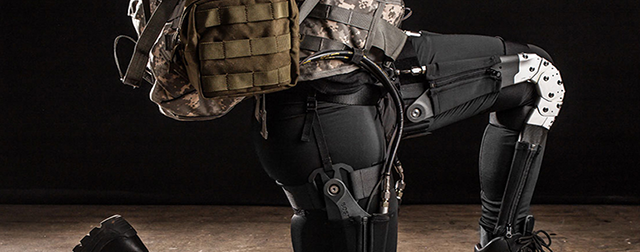In this age of technology, modern exoskeletons are assisting humans in numerous ways. For example, they may help a paraplegic to stand up, walk and even climb stairs; or exosuits can give soldiers and workers superhuman strength.
However, modern exoskeletons, while mechanically and electronically advanced, are often difficult for human users to get both physically and cognitively used to. The reason behind this may be that most exoskeletons today are designed without keeping in mind the way humans would interact with them.
Researchers at Draper, a nonprofit R&D organization, conducted a study to test how distinct factors can affect the usability of exoskeletons. Kevin Duda is an engineer in human systems integration at Draper.
Duda believes while exosystems are normally designed to improve biomechanical capabilities, such as navigating uneven terrain, avoiding obstacles and negotiating stairs, there are actual intricacies that arise as the machine control creates new cognitive work for the user, like workload, attention and situational awareness.
Duda said his company aims to identify and remove the obstacles to a workable exoskeleton system and attain a balance between the system’s control, sensing and actuation.
Read more Wearable MRI Glove Provides New Viewpoint to Hand Anatomy
“The ability for the exosystem to provide feedback to the human or adapt its response based on inferring the human’s intent is important for developing systems for environments of all kinds. The goal for all of us developing wearable assistance technologies is to deliver a high level of human-exosystem fluency,” Duda said.

After conducting a study Duda and colleagues found that it is crucial to improve cognitive and physical ergonomics of exoskeletons. The study also found that without the human-system integration, an exosystem can overtax a wearer’s resources.
The research team identified 7 cognitive factors that signal the need to have a delicate balance between the system’s ability to provide help and its need for guidance from the user.
Duda and his colleagues framed the 7 factors as questions developers should ask while designing exoskeletons. For example, what workload does the wearer experience when performing the functional task with the exosystem? Does the system require significant attentional resources to interact with or command?
Read more E Ink and Faubel Unveil the Med Label to Revolutionize the Clinical Trial Supply Chain
Among the most captivating factors: the more trust a user has in the exosystem, the more the system adapts to the assumptions of the user. Therefore, the user feels the need to provide less input.
The article titled “Human Factors Considerations for Enabling Functional Use of Exosystems in Operational Environments” is scheduled for publication later this year in IEEE Systems Journal.
Others involved in the project were Eric Jones, a human systems architect at Draper; Leia Stirling, Assistant Professor and Co-director of MIT Man Vehicle Lab and Ho Chit Siu, a research assistant at the MIT Man Vehicle Lab.












